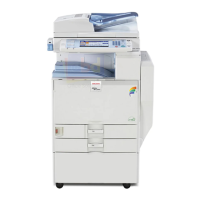
Do you have a question about the Ricoh Aficio MP C3300 and is the answer not in the manual?
| Print Technology | Laser |
|---|---|
| Print Speed (Black) | 33 ppm |
| Print Speed (Color) | 33 ppm |
| Max Print Resolution | 1200 x 1200 dpi |
| Duplex Printing | Yes |
| Scan Technology | CCD |
| Copy Speed | 33 cpm |
| Max Paper Size | A3 |
| Monthly Duty Cycle | 150, 000 pages |
| Copy Resolution | 600 dpi |
| Multiple Copy | Up to 999 copies |
| Scan Speed (B&W) | 50 ipm |
| Scan Speed (Color) | 50 ipm |
| Paper Output Capacity (Maximum) | 500 sheets |
| Processor | 600 MHz |
| Memory (Standard) | 1 GB |
| Memory (Maximum) | 1.5 GB |
| Power Consumption (Maximum) | 1.5 kW |
| Functions | Print, Copy, Scan |
| Zoom | 25% - 400% |
| Scan Destinations | Email, Folder, USB |
| Paper Weight | 60 - 220 gsm |
| Hard Disk Drive | 80 GB |
| Interface | USB 2.0, Ethernet |
| PDL (Page Description Language) | PCL6, PostScript 3 |
| Operating Systems Compatibility | Windows, Mac, Linux |
| Power Source | 220 - 240 V |
Describes types of originals, auto-detected sizes, and missing image area.
Details recommended paper sizes and non-recommended originals for the ADF.
Lists sizes detectable by the exposure glass and ADF for paper selection.
Explains margins on originals that may not be copied.
Covers orientation, exposure glass, and ADF placement.
Explains how to specify the original orientation for copying.
Provides instructions for placing originals on the exposure glass.
Details the procedure for loading originals into the Automatic Document Feeder.
Allows copying of large sets of originals as single documents.
Explains how pages are automatically fed when placed in the ADF.
Enables automatic size detection for originals of varying widths.
Details how to manually specify regular and custom original sizes.
Outlines the fundamental steps for making copies.
Allows interrupting a long copy job for urgent copies.
Enables making copies once the machine is ready.
Allows setting up the next copy job during current copying.
Instructions for using the bypass tray for non-standard paper.
Methods for reducing or enlarging images by ratio or paper size.
Explains how to make two-sided copies.
Details how to combine multiple pages onto one or two sides of a sheet.
Covers sorting, stapling, and punching copies.
Introduces functions for colour copying.
How to choose a colour mode based on originals and requirements.
Copies by changing a certain colour in the original to another colour.
Copies by erasing a certain colour in the image of the original.
Copies by adding a colour to the whole page.
Guides on adjusting colour balance and image quality.
How to adjust the overall colour tone of copies.
Stores and recalls colour balance settings.
Adjusts specific colours by mixing them with adjacent colours.
Covers adjustments like Sharp/Soft, Contrast, and Density.
Allows registering custom colours by adjusting density.
Covers Auto, Manual, and Combined density adjustments.
Choosing the optimal original type for accurate copying.
Methods for selecting copy paper, including Auto and Manual.
Advanced functions for resizing images.
Adds dates, page numbers, or custom stamps to copies.
Covers functions like Margin Adjustment and Erase features.
Explains how Document Server interacts with Copier, Printer, Fax, Scanner.
Explains screens and icons in the Document Server function.
Switching to a larger, easier-to-use display interface.
How to view stored documents before printing.
Procedures for storing, managing, and printing documents.
Step-by-step guide to saving documents on the machine's hard disk.
Changing user names, file names, and passwords of stored documents.
How to find and print documents from the Document Server.
Procedures for removing documents from the Document Server.
Accessing stored documents remotely via a web browser.
Guide on how to enter and navigate the User Tools settings.
Instructions for modifying the machine's default settings.
Proper procedure for exiting the User Tools menu.
Settings for density, original type, display options, and more.
User tools for specifying enlargement and reduction ratios.
Settings for margins, erasing borders, and image manipulation.
Tools for fine-tuning image colour and density.
Security features to manage user access and settings.
Details which machine functions can be used together.
Specifies paper types and sizes compatible with finisher functions.
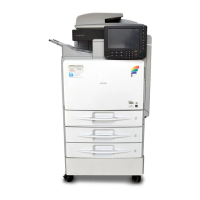
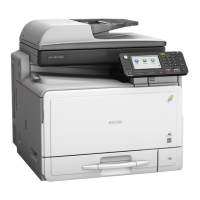
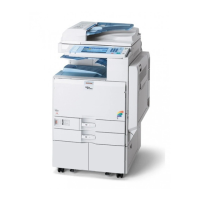
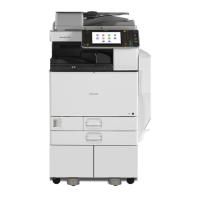
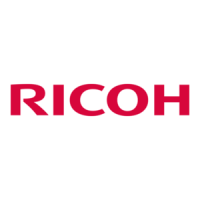
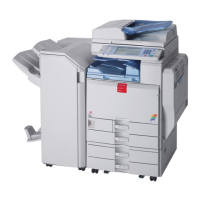
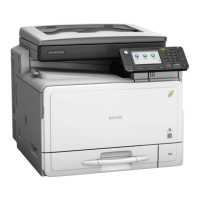
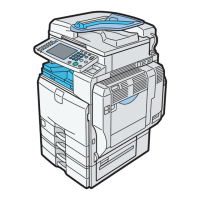

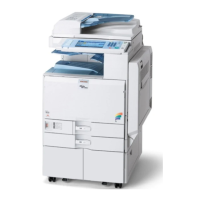
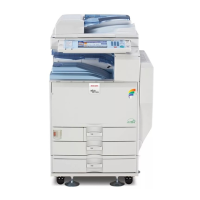
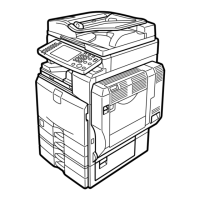
